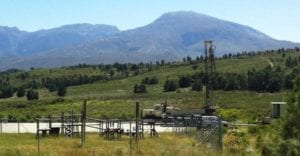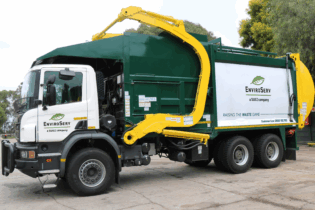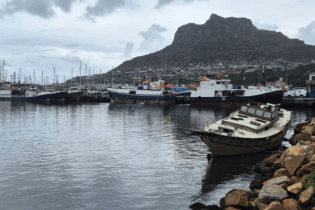Monitoring of groundwater usage is under way at a number of schools in the Western Cape, following a programme to use less municipality-supplied water to irrigate sports fields and other open spaces at newly built schools.
SRK Consulting, a leading group of consulting engineers and scientists, was part of the project commissioned by the Department of Transport and Public Works, in which it undertook feasibility studies for 15 new schools in the province to establish whether enough groundwater was available. Through the drilling of production boreholes and the conducting of pumping tests, SRK was able to recommend that 12 schools pursue the process of extracting groundwater. This year, a groundwater monitoring programme using flow meters and pressure transducers has been initiated at eight schools. “A vital component of ensuring a sustainable supply of groundwater is to implement a monitoring programme,” said Leon Groenewald, principal hydrogeologist at SRK. “We installed flow meters to record the total volume of water that is being abstracted, and pressure transducers record the water level in each borehole on an hourly basis.” The aim of the monitoring, said Groenewald, is to set up a long-term record of groundwater abstraction at each school. “This record will assist in making informed decisions regarding the sustainable abstraction of the groundwater resources,” he said. “Once a record of water level and volumes pumped has been established, the client can be advised to either reduce the pumping rate or, if the impact of abstraction is acceptable, to increase the rate or leave it as is.” The initial irrigation demand levels used during the planning process were based on a weekly irrigation application of 25 to 35 mm. “The monitoring has shown, however, that the actual demand during the first season of irrigation ranged between 40 and 60 mm,” he said. “This is information that will be important for future groundwater developments at new schools.” Groenewald adds that the monitoring has also shown that the level of management of the abstraction should be related to the yield of the borehole. “The strong boreholes on this project do not show an impact yet, mainly because the demand is lower than the supply, whereas the lower yielding boreholes show a more immediate impact,” he said. “The lower yielding boreholes would therefore need stricter management guidelines.” For one of the boreholes in this programme (illustrated in the graph), the recommended pumping rate was 0.9 ℓ/s, while the actual pumping rate was about 1.2 ℓ/s.“The result was that the water level in the borehole reached the pump inlet after a couple of hours of pumping,” said Groenewald. “The monitoring showed that the recovery of the water level is still good and that main problem is that the pump is oversized.”
He emphasised the importance of monitoring as a strategy to improve decision making. “To date, the monitoring has shown that deep pumping levels are caused by oversized pumps and also possible biofouling of screens,” he said. The monitoring will continue for at least a year, so that it spans a summer and winter season, after which time management recommendations will be made. In implementing the initial studies, SRK conducted a hydrocensus and a detailed geophysical survey before drilling began to ensure the highest chance of striking groundwater. “We complete the groundwater investigation in the early stages of the overall project so that the landscaping planners know what volume of groundwater is available,” said Groenewald. “They can then plan the size of the school’s green areas accordingly.” Previously, he said, the design of the sports fields and green areas was often done without a clear picture of the available groundwater. “The way this school project has been planned allows the project managers to avoid a situation where the water requirements of the green areas are higher than the yield of the borehole,” he said. In another project, SRK was requested to assist with establishing an emergency water supply for a rural school in the Grabouw area. The school was not connected to a municipal supply and no other source of water was available, so water was being trucked in on a daily basis. “The steel casing of the existing borehole was starting to rust and clay was entering the cavity,” said Groenewald. “We followed the same process as we did at the other schools: conducting a geophysical survey to locate the best possible position for drilling the new borehole, rather than drilling blindly next to the existing borehole. We did this because no data was available on the old borehole, and we wanted to minimise the risk of drilling a dry or low-yielding borehole.” The blowout yield of the new borehole was about 5 ℓ/s, indicating sufficient flow for the purpose. The whole process – from the geophysical survey to the equipping of the borehole, fitting of a pump and connecting up to the existing reticulation infrastructure – took about two weeks.









